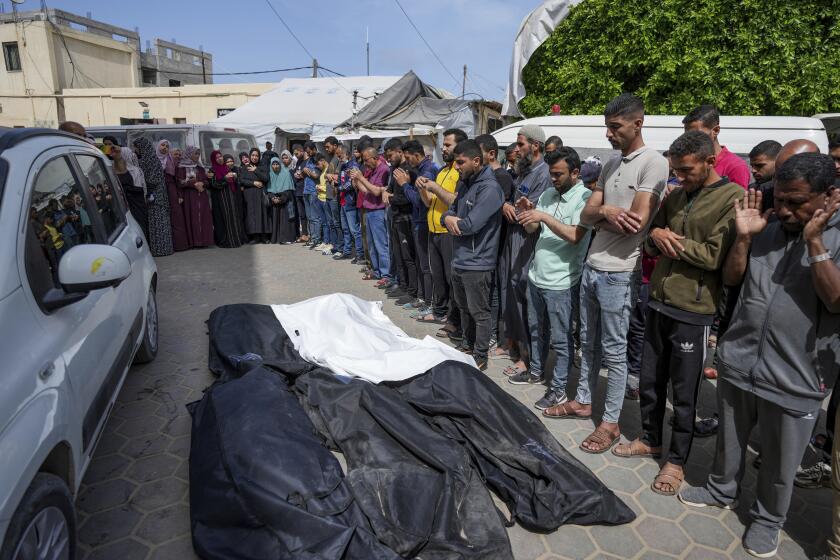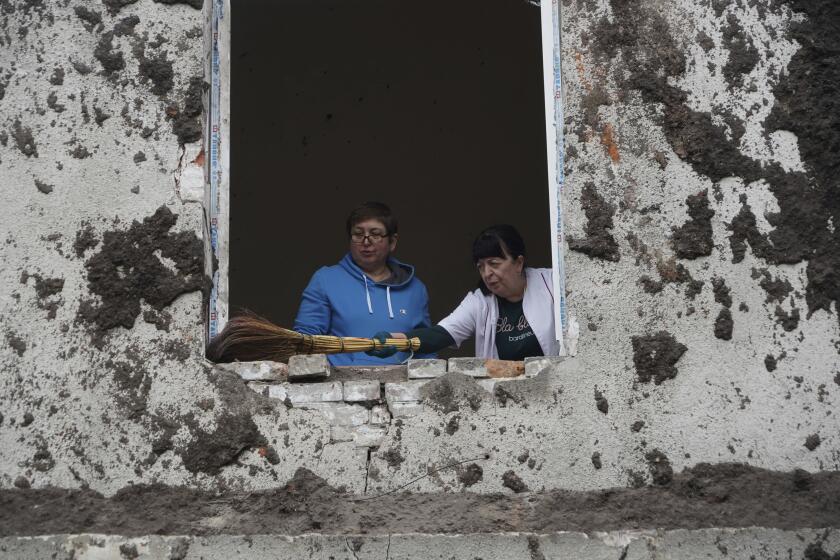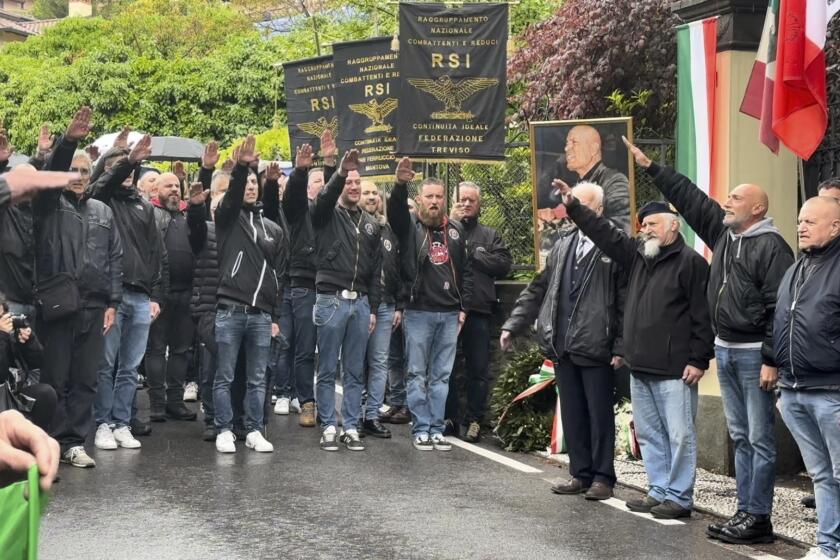Armenians bid goodbye to a hero
Tens of thousands of mourners wound through the heart of this ancient city Tuesday in the funeral procession for an ethnic Armenian journalist whose slaying triggered soul-searching over national identity, freedom of expression and the historical ghosts that shadow Turkey’s present.
Followed by the largely silent throng, a black hearse slowly bore the flower-strewn coffin of editor Hrant Dink to an Armenian Orthodox church, where he was eulogized as a voice of courage and conscience. A teenage nationalist reportedly has confessed to gunning down the 52-year-old journalist Friday outside his office.
The extraordinary display of public mourning shut down much of downtown Istanbul, whose narrow back alleys and wide boulevards are normally the scene of a raucous commercial free-for-all. Onlookers, many dabbing their eyes, leaned from balconies and watched from doorways as the cortege passed by. Some applauded, in the traditional sign of respect for honored dead.
Dink, a Turkish citizen, was best known as an advocate for the rights of the country’s Armenian minority -- including efforts to win official recognition by Turkey that the deaths of about 1.5 million Armenians in the final years of the Ottoman Empire constituted the first genocide of the 20th century.
Turkey officially blames the deaths on fighting, cold and hunger rather than any systematic campaign of extermination, a stance that is widely viewed internationally as an obstacle to its aspirations to join the European Union.
Scores of Turkish academics, journalists and novelists, including Nobel laureate Orhan Pamuk, have been prosecuted under a provision known as Article 301, which contains a wide-ranging ban on “insulting Turkishness.” Any public reference to an Armenian genocide, even in carefully couched language, can result in being hauled into court and possibly jailed, as Dink was.
Hours before the daylong funeral rites began, mourners gathered outside the offices of Agos, Dink’s newspaper, whose name refers to the nurturing of a seed. Many carried placards reading “We are all Armenians” and “We are all Hrant Dink.”
Even among those Turks who believe their country has been unfairly tarred with genocide allegations, the violent backlash by right-wing nationalists has prompted profound unease. Many were particularly disturbed by the young age of the allegedly confessed killer, identified by authorities as 17-year-old Ogun Samast, and the fact that he had apparently come under the sway of nationalist militants.
A mood of quiet desolation pervaded the day’s events. Loudspeakers played a mournful folk song Dink had always loved. At the site of the slaying, his supporters released a flight of white doves.
“I feel like I lost a brother,” said Zeynep Catik, a 55-year-old homemaker who joined the funeral procession. “Turkey lost one of its core values.”
The Armenian patriarch, Mesrob II, addressed the mourners, urging that the 60,000 Armenians living in Turkey be accepted as an integral part of society.
“We still hope that [Turks] ... will accept that the Armenians are Turkish citizens who have been living in this land for thousands of years, and are not foreigners or potential foes,” he said.
Although Turks reacted to the killing with a spontaneous outpouring of horror and revulsion, it remained to be seen whether the editor’s death would lead to a groundswell of support for amending or abolishing Article 301, or promote a social climate in which examination of Turkey’s past would become more acceptable.
In death, Dink achieved some measure of the reconciliation between Turks and Armenians that he so passionately sought in life.
In a highly unusual step, Turkey invited Armenia to send representatives to the funeral, even though the border between the two countries is sealed and they have no diplomatic ties.
In a sign of ambivalence, however, the Turkish government was represented by a bevy of senior ministers but not its topmost leaders.
The procession, filled with dignitaries and diplomats, snaked along a five-mile route that took the marchers through downtown, across the Golden Horn waterway and into the Old City, site of Istanbul’s most evocative monuments, including the Blue Mosque and the Hagia Sophia church, now a museum. Dink was laid to rest in the same Armenian graveyard where his parents were buried.
The slain journalist’s widow, Rakel, flanked by the couple’s three children, made a poignant appeal to the crowd that gathered before the funeral march. Her husband’s death, she said, must not become a catalyst for more hatred.
“The murderer was once a baby,” she said. “Unless we can question the darkness that turned this baby into a murderer, we cannot achieve anything.”
*
Special correspondent Borg reported from Istanbul and Times staff writer King from Kabul, Afghanistan.
More to Read
Start your day right
Sign up for Essential California for news, features and recommendations from the L.A. Times and beyond in your inbox six days a week.
You may occasionally receive promotional content from the Los Angeles Times.






